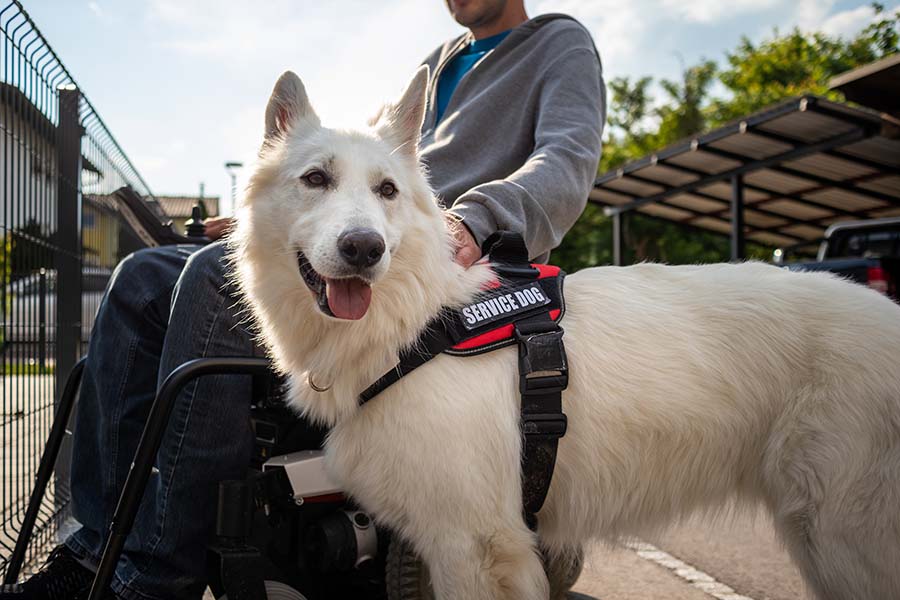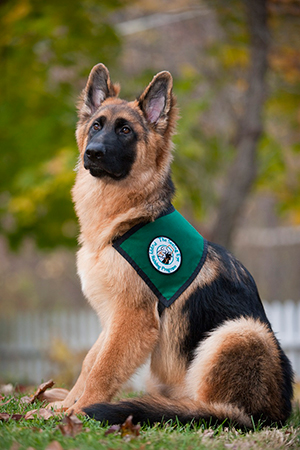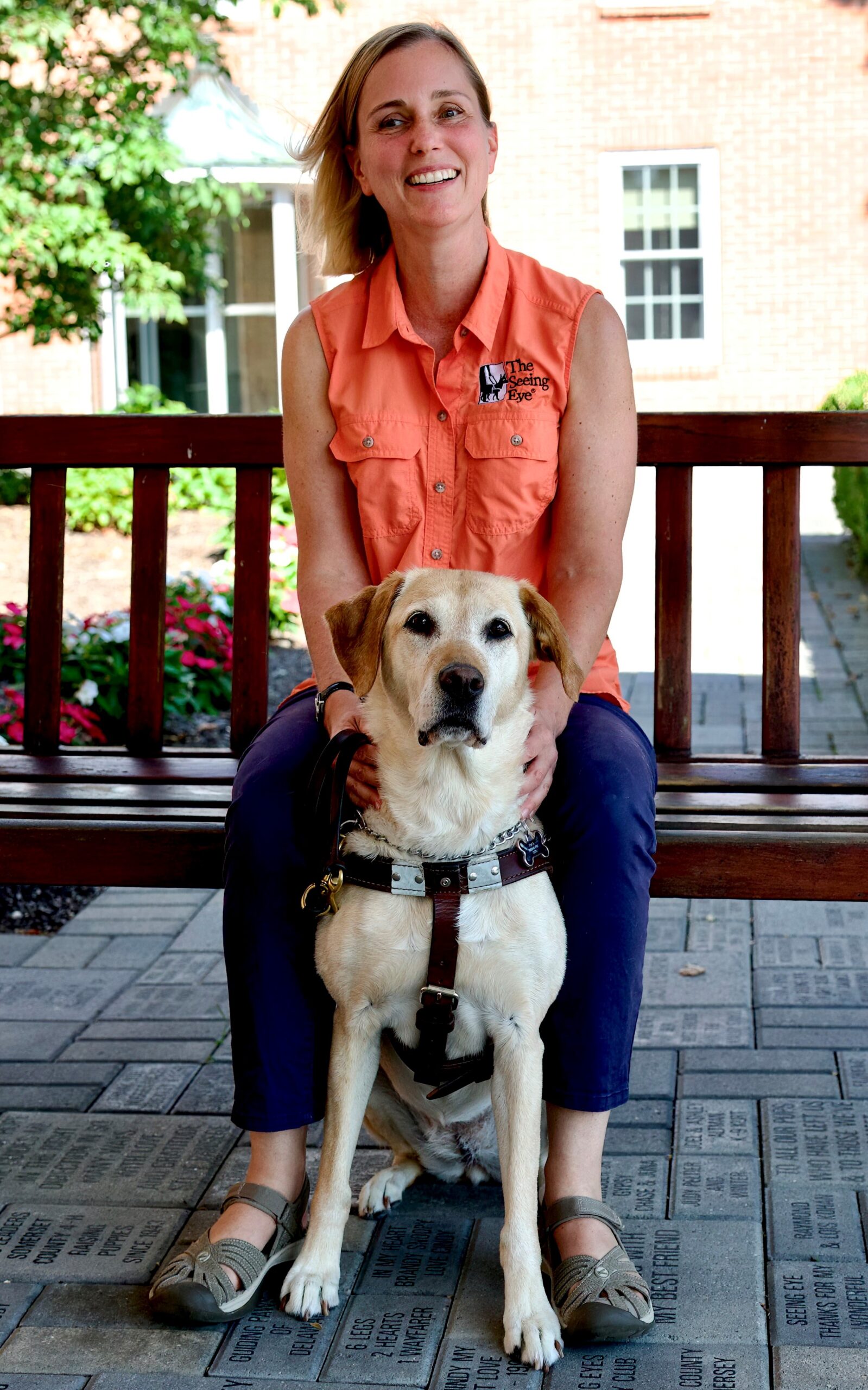
UZURV chats with service dog training organization, The Seeing Eye®
“As my legs stretched out, and my shoulders went back, and my head went up, and the wind blew in my face, I knew I had my independence….”
“As my legs stretched out, and my shoulders went back, and my head went up, and the wind blew in my face, I knew I had my independence….”
— Morris Frank, co-founder of The Seeing Eye, describing the first guided walk with his service dog, Buddy.
UZURV means accessibility for thousands of people. Accessible transportation. Accessible scheduling. Accessible service.
This is doubly-true for our riders who work with service animals.
UZURV Drivers are required by law to provide access to service animals. That means Drivers must allow a service animal in their car when a rider is accompanied by one.
But beyond that, providing access to service animals is the right thing to do.
Why Service Animals?

Service animals provide an important function. They offer disabled riders greater independence and accessibility to work, play, and everyday life. The tasks that service animals perform create a vital link to mobility, safety, and community participation for millions of people.
UZURV spoke with Melissa Allman, Advocacy and Government Relations Specialist for The Seeing Eye in Morristown, NJ. Established in 1929 by Dorothy Harrison Eustis and Morris Frank, who is quoted above, The Seeing Eye is the first service dog training organization in the United States and the oldest one in the world.
“Service animals are important because they perform tasks for people with disabilities,” Allman explained. “Seeing, hearing, walking, thinking – these are major life activities central to what people do. If one of those areas is substantially impaired, that is a disability.”
What tasks do service animals perform?
“My Seeing Eye dog, Luna, is trained to guide me safely around obstacles,” Allman said, referring to her friend and partner, snoring just beneath her desk. “She guides me through environments, over different types of terrain, and she directs me to stop at certain landmarks like crosswalks and curbs.”
Allman added, “Luna is also trained to intelligently disobey me, should I tell her to go forward and something is unsafe.”
A guide dog will intelligently disobey a handler when the handler commands them to perform a task, but the dog deems the task dangerous – such as entering a crosswalk when a vehicle is approaching.
“Luna has saved my life on a number of occasions. People have witnessed it and I’ve experienced it,” Allman said.
Service dogs also perform vital tasks for people with other disabilities
Service animals….
- Alert those who are deaf or hard of hearing to sounds.
- Pull wheelchairs for those with mobility limitations.
- Retrieve objects like phones, keys, and medicine for those who cannot.
- Signal handlers about seizures or the presence of allergens.
- Warn owners about potential danger and act as a protective barrier for those with PTSD.
Service animals perform critical tasks for UZURV riders – as well as many others who work with them to function effectively and independently every day. But even more, service dogs can offer a new way to experience the world.

“When I was using my cane to navigate my environment, independence was possible,” said Allman. “But with a Seeing Eye dog, independence is empowering and has the potential to be really fun.”
“When I was using my cane to navigate my environment, independence was possible,” said Allman. “But with a Seeing Eye dog, independence is empowering and has the potential to be really fun.”
What does it take to become a service dog?
Seeing Eye dogs are bred and trained specifically to support those who, like Allman, are blind or visually impaired.
Each dog is rigorously tested and evaluated. They are exposed to everyday stressors such as public places, traffic, and loud noises. They are trained to pull, watch for overhead obstacles, and guide people through restaurants, sidewalks, and crosswalks. And they are taught how to intelligently disobey, as demonstrated by Allman’s dog, Luna.
Not every dog succeeds. But those who do become an invaluable partner to the people who need them.
What is the price tag for a program like this?
Even with volunteer assistance in raising young puppies, the breeding, care, and training for a Seeing Eye dog costs around $75,000 per dog.
However, since 1934, The Seeing Eye has charged students only $150 for their first dog and $50 for subsequent dogs. Veterans and those in the armed forces simply pay $1.
Accessible pricing such as this is made possible through private donations. The Seeing Eye receives no government funding.
What UZURV Drivers should know about service animals
The important work and opportunity that service animals provide is why Federal Law requires them to be allowed everywhere people are – including cars, buses, trains, planes, and all forms of transportation. This law also applies to UZURV Drivers.
“Please, please, don’t underestimate the value of what my dog is doing,” said Allman. “Luna is here because I need her and she is working. Please do not interfere with her.”
Allman went on to offer advice to UZURV Drivers when encountering a service animal.
“It’s very important not to engage with a service dog,” she explained. “Engage with the handler, because engaging with the dog – even to pet or talk to the dog – can distract a service dog from its work.”
“A distraction like that can cause a service dog to jeopardize their handler’s safety,” Allman emphasized.
Want more information?
The Seeing Eye offers an extensive resource page with information about legal rights and requirements for service animals.
They also provide a history of The Seeing Eye organization, as well as stories of how Seeing Eye dogs have changed their owners’ lives for the better.
Note: While other organizations also train service animals, a “Seeing Eye dog” is trained and certified only by The Seeing Eye. Their brand is trademarked.
